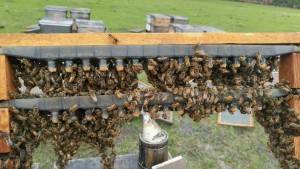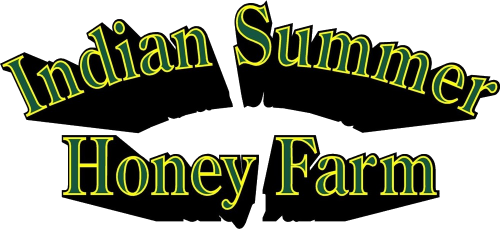We have received a little over 6 inches of rain over the last week here in Sumter Florida. We also saw our first 3 frosts. We spoke about Chill Degree hours last week. Well, we’re getting them now. Yesterday, we observed a great deal of pollen coming in the hives around Lake Panasoffkee. The cell yard here at home had good maple n ectar shake yesterday while we were grafting. Our first graft went well and the starters, for the most part, did a very good job. Further into the maple flow, we would expect the quantity and quality of cells to continue to increase. But, this (reference to the picture posted) doesn’t look bad for our first night in the starters of the season.
ectar shake yesterday while we were grafting. Our first graft went well and the starters, for the most part, did a very good job. Further into the maple flow, we would expect the quantity and quality of cells to continue to increase. But, this (reference to the picture posted) doesn’t look bad for our first night in the starters of the season.
The bees we sent to California arrived safely Wednesday night. They have been unloaded and moved into their almond locations where they will reside for the next 4-5 weeks. The blueberry bees are also in place here in Florida. We can keep our eye on them a lot easier than we can keep our eye on the ones in California and we’ll let you know how the blueberries and our pollination hives look over the next few weeks.
Several years ago, we stumbled on a discovery that has made keeping the bees in the blueberries a lot healthier and easier. Many growers apply liquid nutrition to their blueberry plants during the bloom. What we discovered was that in some cases, a surfactant was applied to the liquid nutrition to aid its absorption into the waxy leaves of the blueberry plants. The surfactant is really nothing more than an agricultural soap. A light soapy water solution can be used as a very effective insecticide against hornets and honeybees as the soap breaks the waxy exoskeleton of the bee or hornet and allows the water to absorb into the muscle tissue and drowned the insect. This was a case of unintended consequences that we stumbled on in a blueberry patch that was being sprayed at 11:00 in the morning adjacent to one of our mating nuke yards several years ago.
After much heated discussion with the grower and applicator over safety concerns of a liquid fertilizer, according to the label being very safe for use around honeybees verses the reality of what we were seeing in the patch, in full bloom, full of bees, being violently sprayed in the midst of their work, something just seemed really wrong. We knew we had a declining field population problem that consistently coincided with blueberry bloom. This occurred each year, and because we really wanted to believe the grower and the applicator, we couldn’t ever reconcile what we saw happening to our bees and what we saw happening in the blueberry patch.
When we all took the time to look at what was going into the sprayer, we discovered, or I should say, I discovered, the surfactant. I knew the danger this posed to bees, but the grower, the applicator, and the manufacturer of the nutrition who recommended the use of a surfactant did not.
I’m pleased to say that today we’re all still friends working together, my bees helping to produce a bountiful delicious crop consumers in this area enjoy each spring and our bees are thriving. A little conversation, and really taking the time to understand each other’s needs and actions, can really help go a long way in a beneficial conclusion to what otherwise can be a tragic end, not only to our bees, but to long held friendships.
